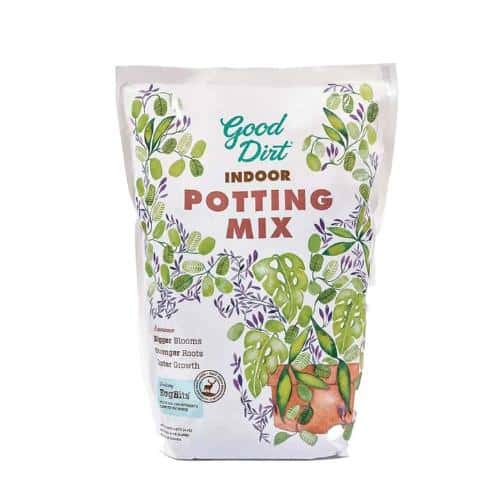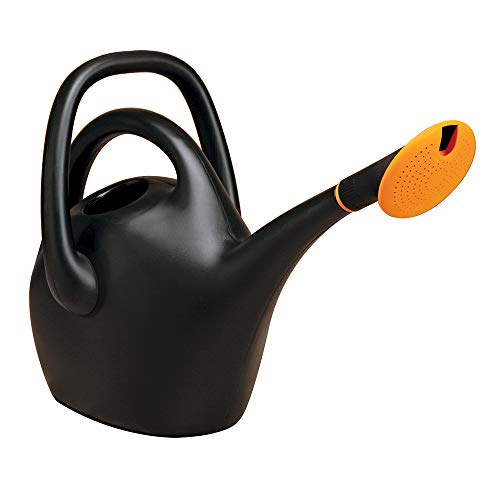Welcome to the battle against spider mites, the tiny pests that love your indoor plants a little too much! This post will show you how to spot them, stop them, and keep your plants happy and healthy.
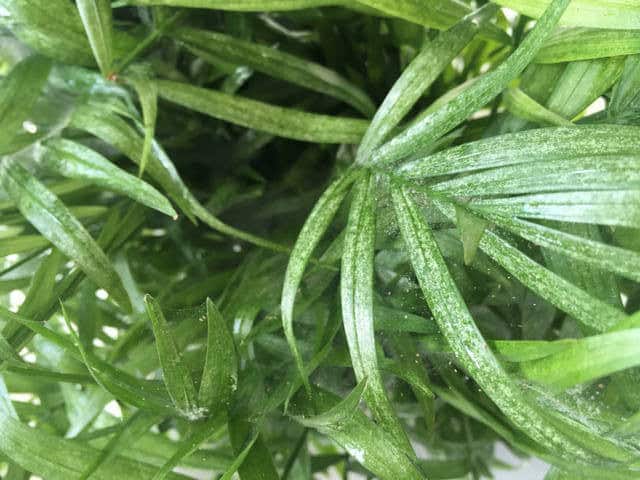
SHORT ANSWER:
How to get rid of spider mites
- Mix 1 cup (8 ounces) of alcohol and a few drops of dish soap in 30 oz of water.
- Pour the mixture into the spray bottle and shake well.
- Spray the whole plant well.
- Make sure to apply the solution to both sides of the leaves and plant stems as well.
- Repeat the treatment twice a week until the issue is gone.
I strongly suggest that you take a look at the article or view my video to discover more about eliminating spider mites from houseplants, including treatment options, prevention strategies, and answers to commonly asked questions.👇
Table of Contents
I’ve assisted thousands of our customers with plant care, and learning how to get rid of spider mites is a frequent concern, especially for beginners who often find these pests quite alarming.
Spider mites are a common pest that can inflict significant damage on indoor plants. These minuscule invaders are hardly visible to the naked eye but can be identified by the telltale webbing they leave on plant foliage.
If I notice that the leaves of my plants are stippled with yellow marks or are beginning to lose their vitality, it’s critical that I check for these pests.
Spider mites thrive in warm, dry conditions, so maintaining a vigilant eye, particularly during the winter months when the indoor air may lack humidity, is vital for keeping plants healthy.
Understanding the life cycle and behavior of spider mites is key to getting rid of them. These pests reproduce rapidly in suitable conditions, and without prompt and thorough action, a small infestation can quickly become a larger problem.
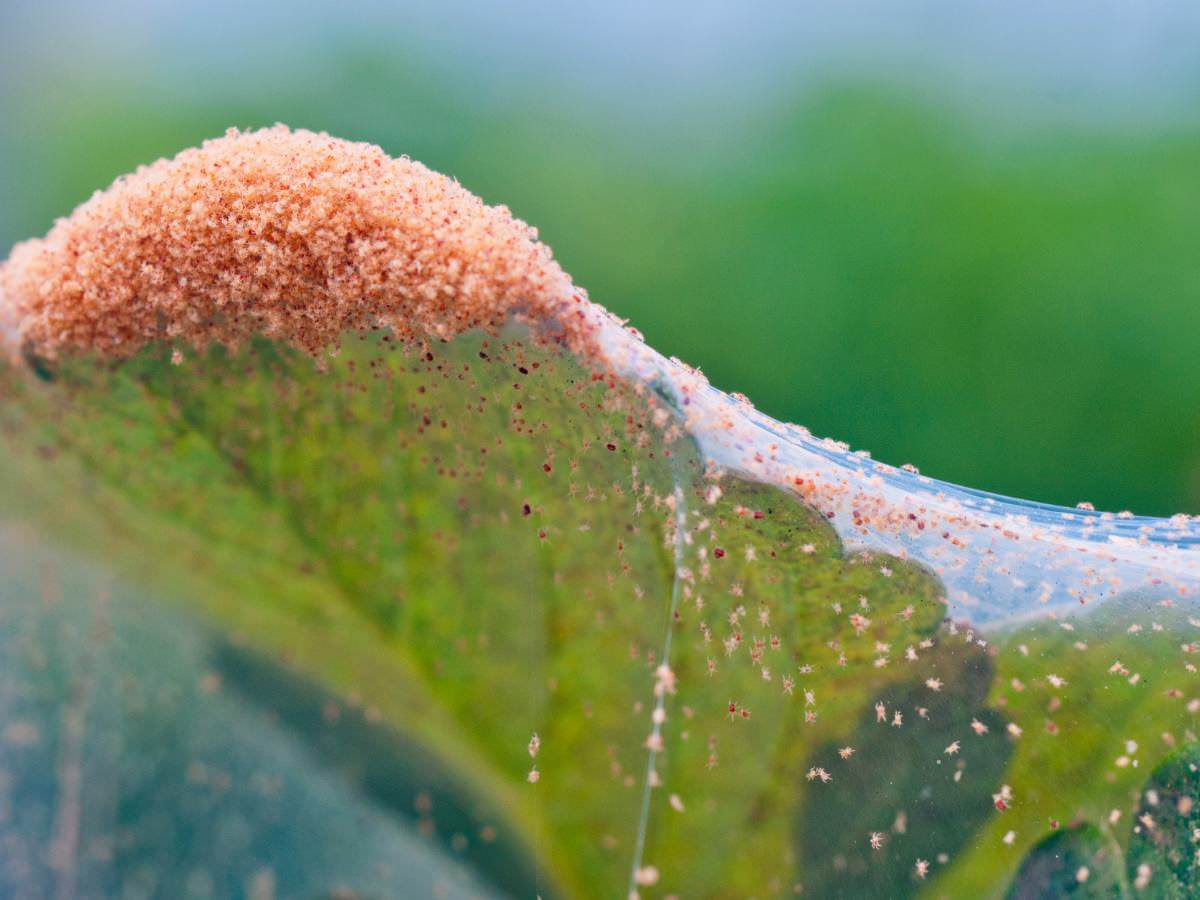
Choosing the right method to get rid of spider mites is key for me. I need to think about how bad the infestation is, what kinds of plants are involved, and whether I prefer using natural or chemical solutions.
Identifying Spider Mites
Before taking any steps to get rid of spider mites, it’s essential to confirm that you’re dealing with spider mites. These tiny pests can wreak havoc on indoor plants, and early identification is key to preventing a larger infestation.
Signs of Spider Mites
Spider mites are minuscule creatures, often invisible to the naked eye, making them particularly challenging to detect in the early stages of infestation. However, certain telltale signs can alert you to their presence:
- Leaf Discoloration: Infested leaves may lose their vibrancy, appearing dull or grayish, with yellow patches.
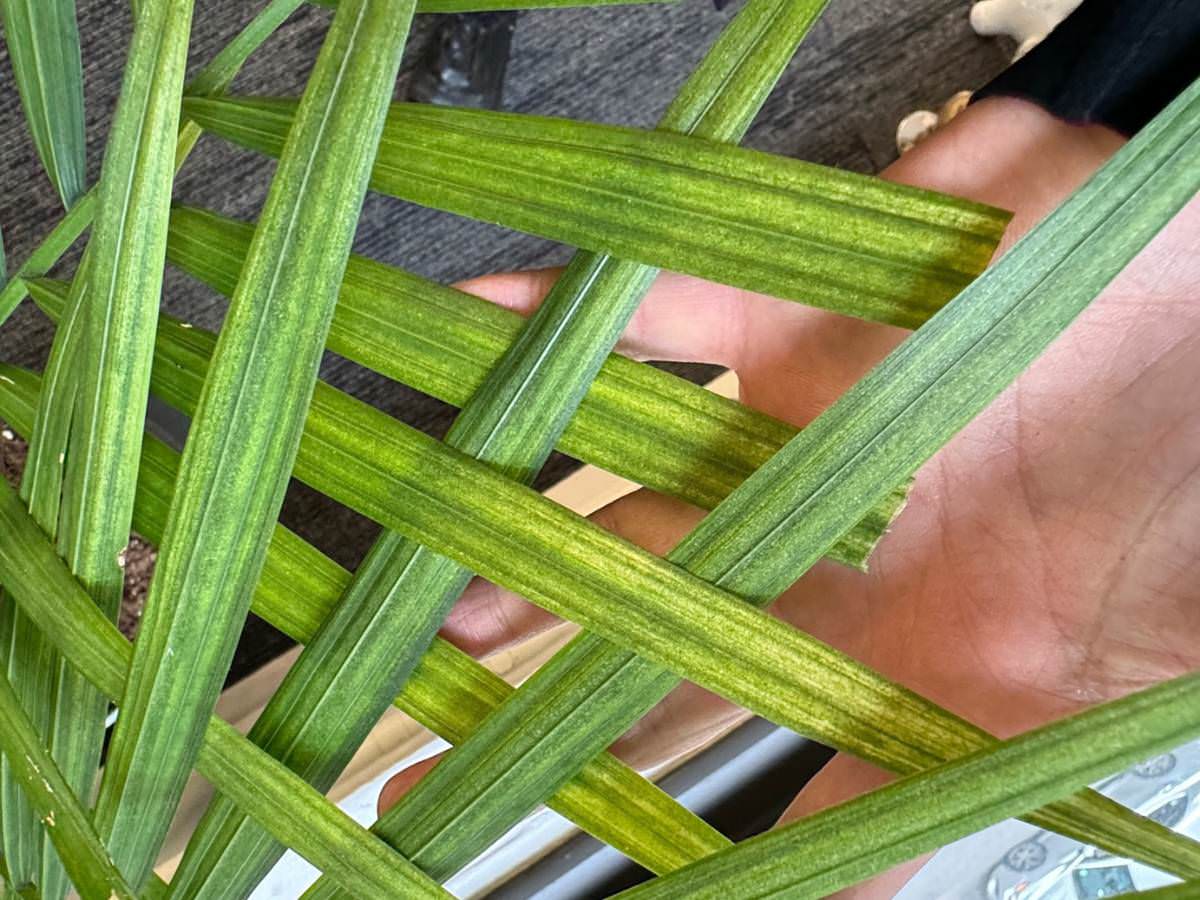
- Webbing: Fine, silky webbing on the undersides of leaves or between leaf joints is a definitive sign of spider mite activity.

- Texture Changes: Leaves may feel gritty or sandy due to the presence of mites and their eggs.
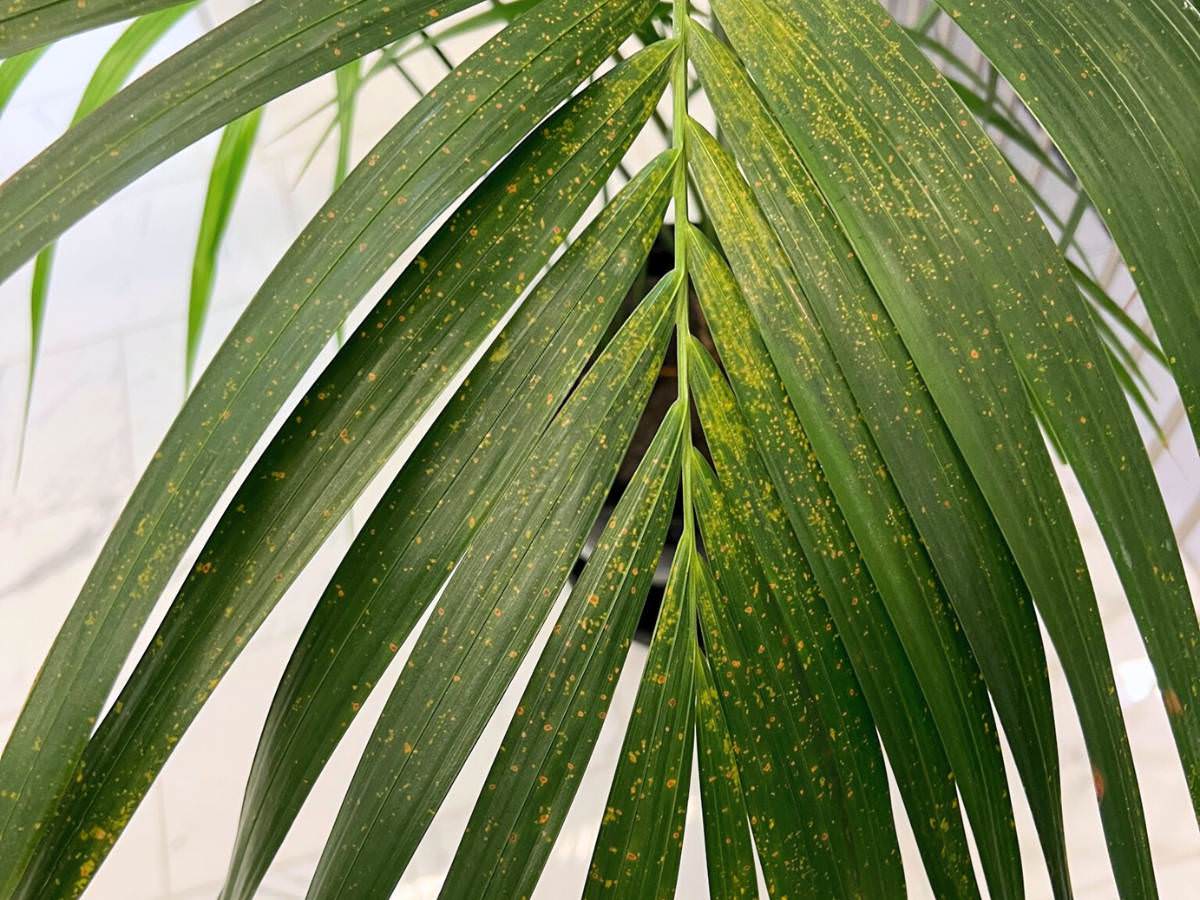
To confirm these signs and understand how to get rid of spider mites, use a magnifying glass. This will help you spot the tiny spiders themselves, which may be red, yellow, green, black, tan, or brown, and even see them moving on their webbing. The color of spider mites can change depending on their species, developmental stage, and the host plant they are feeding on. They’re tiny, so careful inspection is necessary.
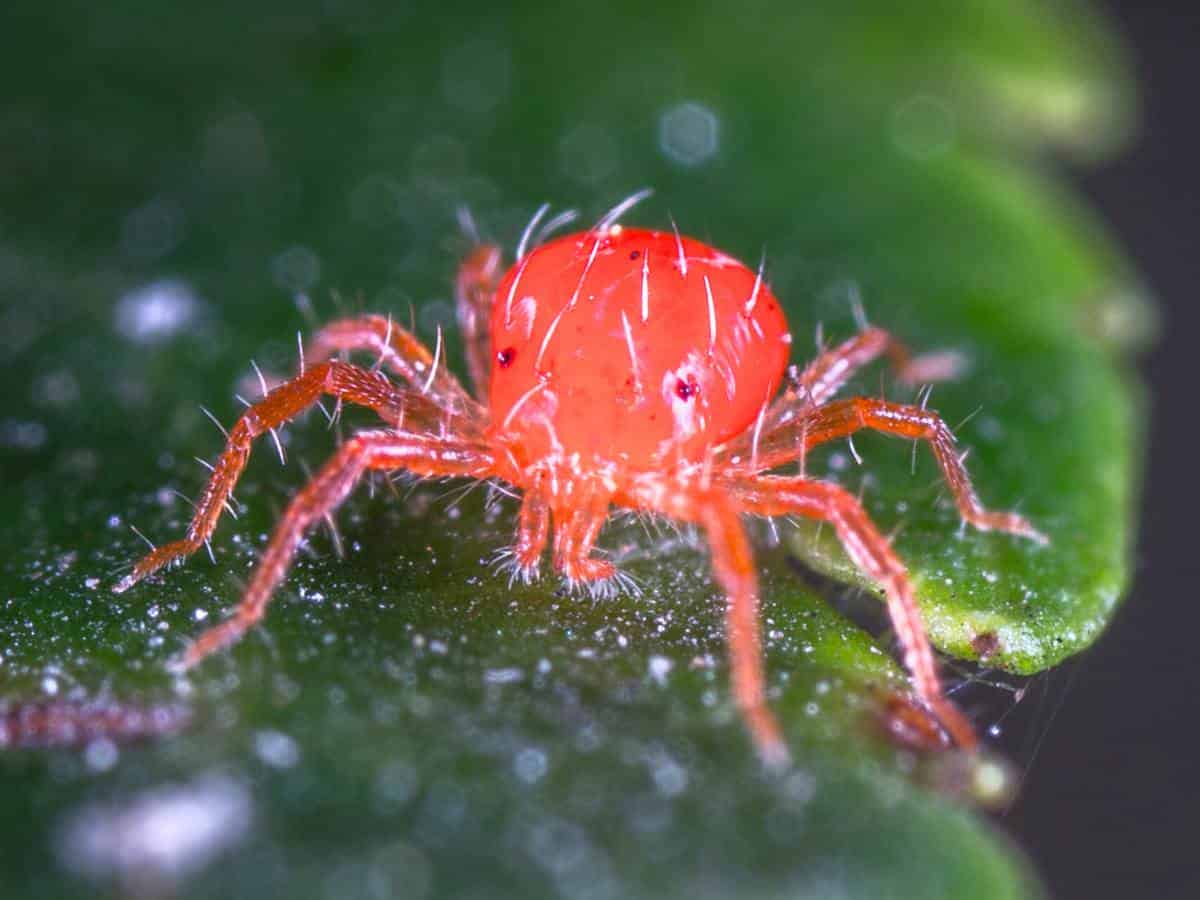
Regular inspection of your plants, focusing on the undersides of leaves and stem joints, can help you catch an infestation early, significantly increasing your chances of successfully treating the problem.
Light to moderate infestation can be successfully treated.
I would recommend considering discarding a heavily infested plant, replacing it with a new one, and getting a fresh start.
Heavy infestation is much harder to control, and it puts all other plants in danger.
Inspecting Plants
When I inspect my plants for spider mites, I start with the leaves, looking for the aforementioned stippling and discoloration.
I examine closely, checking both the tops and bottoms of the leaves. The stems may also show signs of distress, like a gritty texture, that can indicate mite activity.

© My City Plants
It’s important to inspect regularly and know how to get rid of spider mites, as they can proliferate quickly, especially in warm, dry conditions. If you notice webbing or suspect an infestation, isolate the affected plant immediately to prevent its spread to other indoor plants.
Understanding Spider Mites
Before diving into control methods, it’s essential to understand the life cycle of spider mites and how environmental factors create a haven for these pests.
Life Cycle of Spider Mites
Spider mites have a rapid life cycle that can be completed in as little as a week under the right conditions. It starts with eggs laid on the undersides of leaves. These hatch into larvae, which mature into nymphs and then adults. With such a quick turnaround, populations can explode if not managed promptly.
- Eggs: Found on the underside of leaves.
- Larvae: First stage after hatching.
- Nymphs: Immature stages that go through several molts.
- Adults: Reproducing stage of the life cycle.
Environmental Factors
Spider mites prefer warm, dry conditions, which are common in many homes, especially during winter when indoor heating systems are used.
High temperatures and low humidity levels often contribute to outbreaks of spider mites. Maintaining an environment that is less conducive to their proliferation is key to preventing infestations.
- Warmth: Ideal temperatures for spider mite activity range between 60-86°F.
- Dryness: Low humidity levels accelerate their life cycle.
Indoor plants that are most affected by spider mites
I’ve noticed that when learning how to get rid of spider mites, it’s crucial to recognize that houseplants most affected by these pests include a variety of species, especially those with broad, thin leaves rather than small, fleshy ones. The plants I find most susceptible to spider mite attacks tend to have these broader leaves, as spider mites seem to struggle to pierce through the thicker, waxier epidermises of plants like succulents and cacti. Some specific plant families and species that I’ve found to be highly prone to spider mites include:
- Schefflera
- Prayer plant
- Cast-iron plant
- Croton
- Palm Lily
- Dieffenbachia
- English Ivy
- Calathea
- Alocasia
- Palms, especially Bambo Palm
- Calathea
- Alocasia
- Caladium
- False Aralia
💪 Common houseplants that are most resilient to spider mites
These plants are less likely to be affected by spider mites due to their physical characteristics, such as tough or waxy leaves, and some contain natural toxins that deter pests. It’s important to note that while these plants are more resistant, no plant is completely immune to pests. Regular monitoring and proper care are still necessary to maintain plant health.
How can I prevent spider mites from infesting my indoor plants?
When it comes to protecting my houseplants from spider mites, I find that understanding how to get rid of spider mites through prevention is more effective than dealing with an infestation. Maintaining the right humidity levels and adhering to proper plant care practices are key strategies I rely on to keep these pests at bay.

Spider mites are tiny pests that can cause significant damage to your indoor plants if left unchecked. Here are straightforward steps I take to prevent their infestation:
Maintain Adequate Humidity: Spider mites thrive in dry environments. By increasing the humidity around my plants, I make conditions less favorable for them.
Misting: I frequently mist my plants or use a humidifier to maintain higher humidity levels.
Water Wisely: Overwatering can stress plants, making them more susceptible to pests. I ensure that I only water my houseplants as needed.
Inspect New Plants: Before introducing new plants into my home, I inspect them thoroughly for signs of spider mites or other pests.
Quarantining new plants for a short period allows me to watch for any issues before placing them near my other plants, which is a critical step in learning how to get rid of spider mites effectively before an infestation can spread.
Cleanliness: I keep the plant area clean and dust-free, as dust can harbor spider mites. Cleaning the leaves of my plants gently with a damp cloth can remove dust and possibly mites.
Spider mites treatment
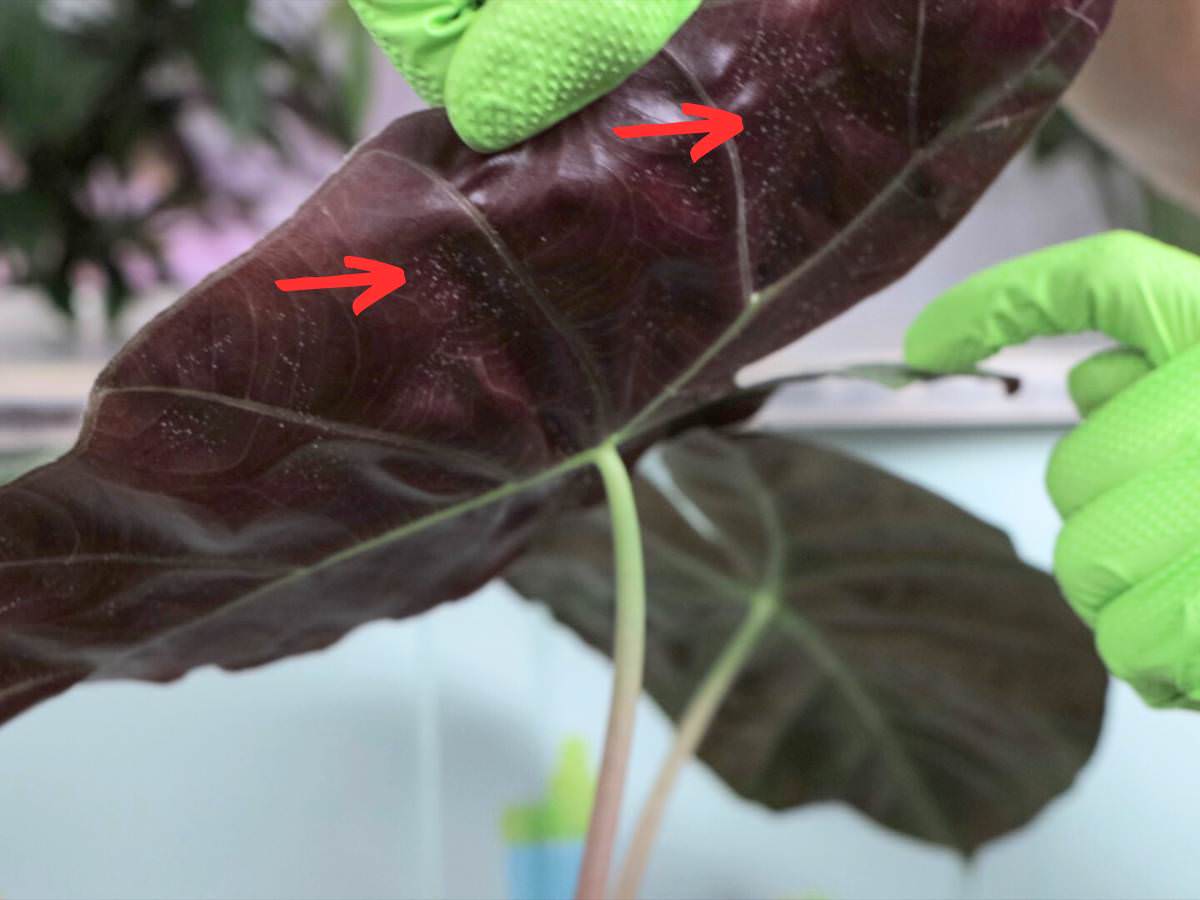

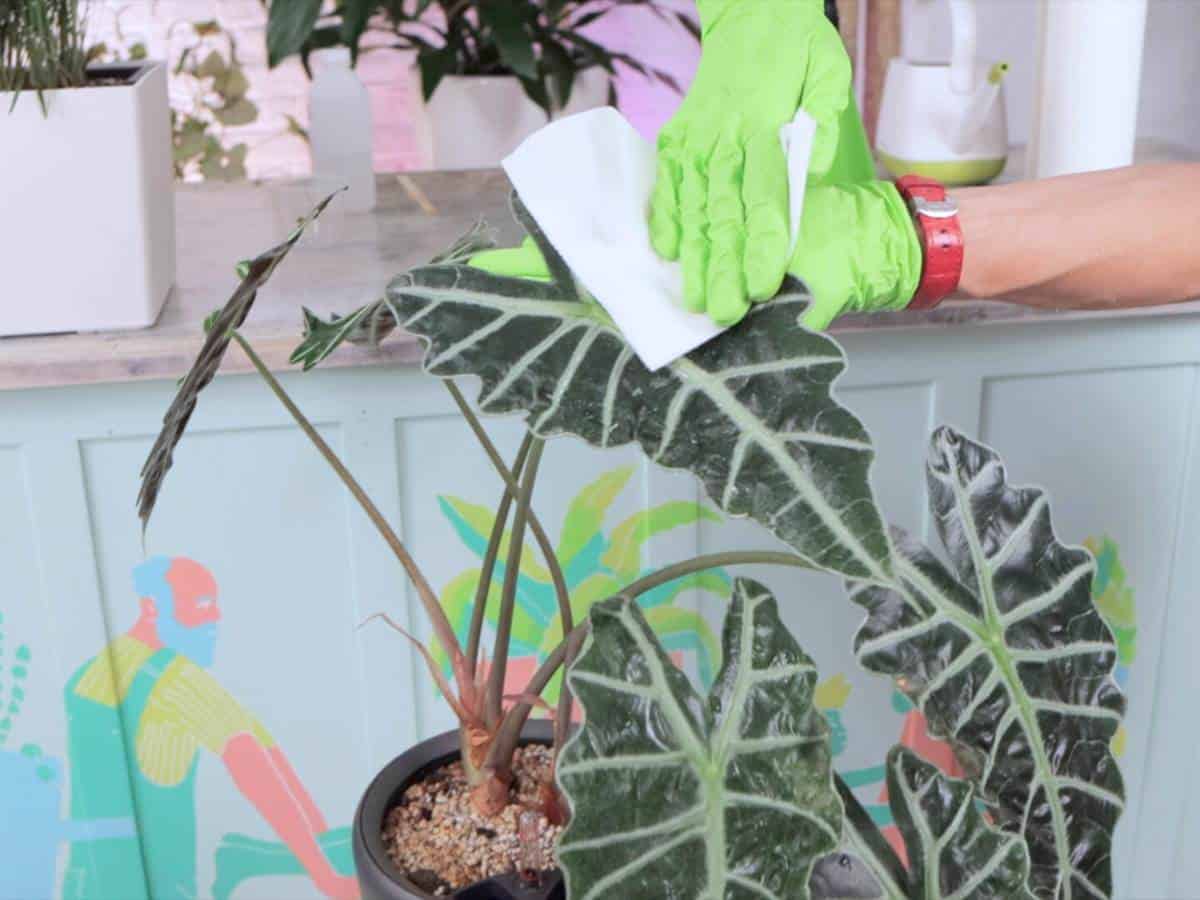
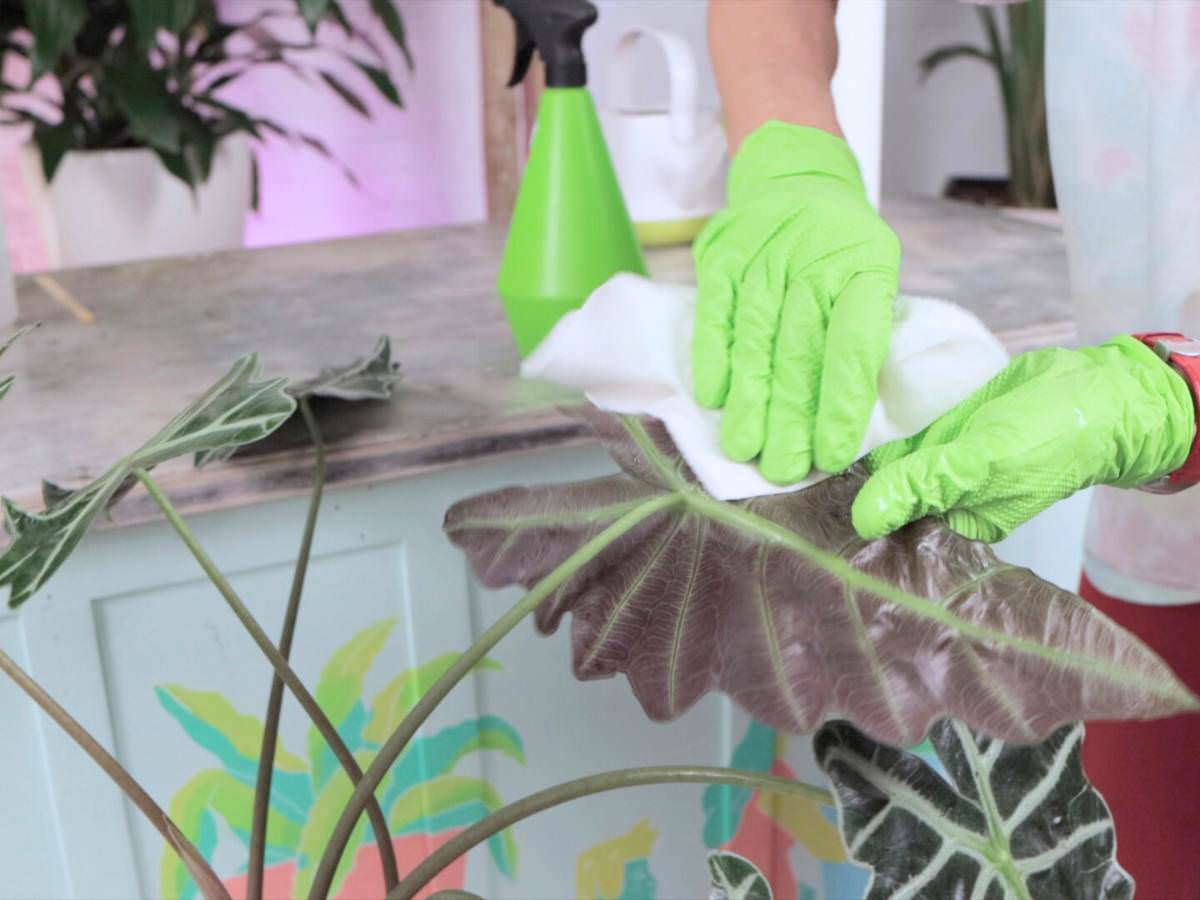
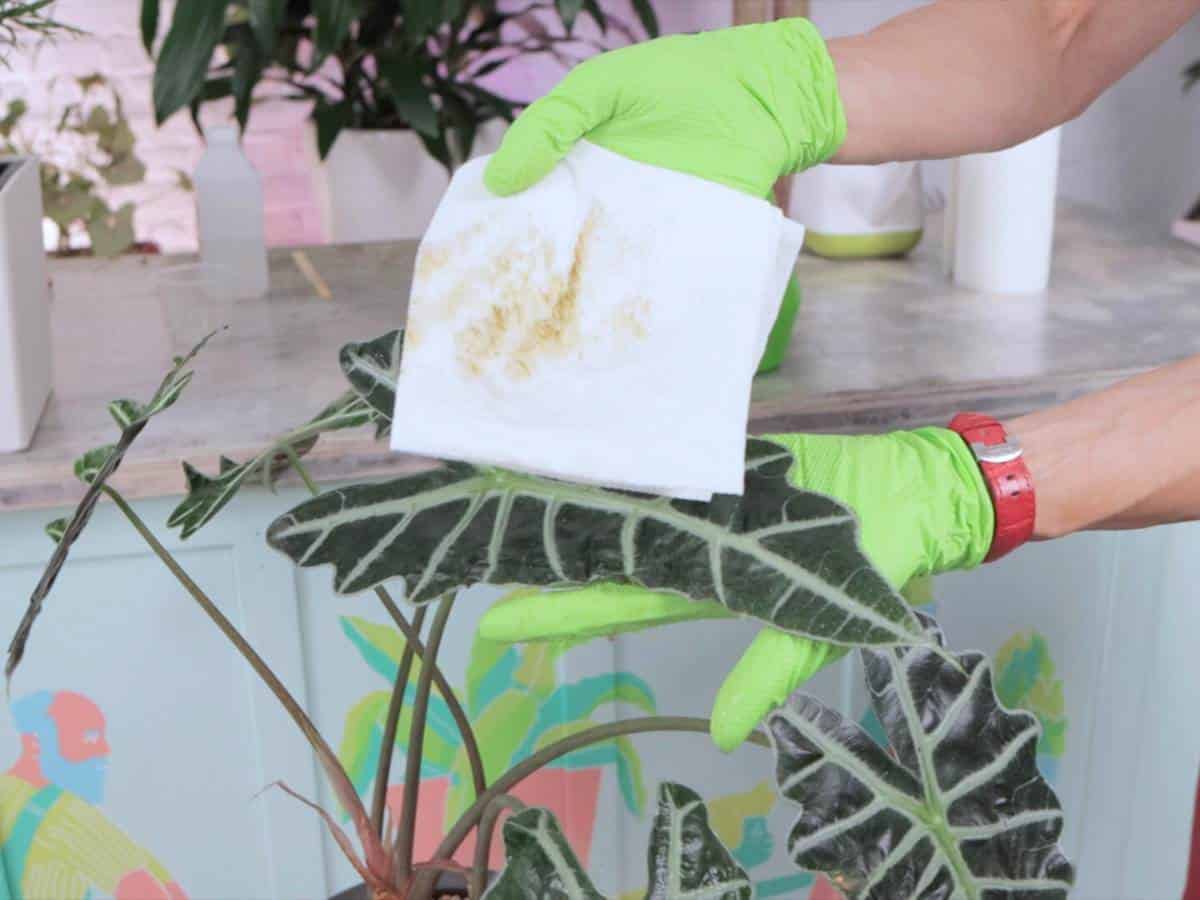
Remedies to get rid of spider mites
Dish soap, rubbing alcohol, and water solution.
Learning how to get rid of spider mites is essential for indoor plant care, and my favorite remedy has become a go-to solution, widely adopted in maintaining thousands of tropical plants at our commercial client locations. Its main advantages include high effectiveness and minimal scent, especially when compared to horticultural oil-based products like neem oil. Although there’s a brief initial aroma of rubbing alcohol during application, it dissipates quickly, making it a preferred method for tackling spider mite infestations.
- Mix 1 cup (8 ounces) of alcohol and a few drops of dish soap in 30 oz of water.
- Pour the mixture into the spray bottle and shake well.
- Spray the whole plant well.
- Make sure to apply the solution to both sides of the leaves and plant stems as well.
- Repeat the treatment twice a week until the issue is gone.
Mite Massacre spider mite killer
This product, featuring a unique oil soap blend with pesticidal and fungicidal properties, is highly valued for its ability to get rid of spider mites effectively. It makes 8 bottles of spray and is praised for its effectiveness in eliminating spider mites and its versatility across various plants.
- Mix 1 OZ (8 ounces) of Mite Massacre with 1 gallon of water.
- Spray the whole plant well.
- Make sure to apply the solution to both sides of the leaves and plant stems as well.
- Repeat the treatment twice a week until the issue is gone.
Neem oil, dish soap, and water solution
Neem oil is a versatile natural pest repellent and is particularly effective against spider mites.
To use, I mix a neem oil with water and dish soap which acts as an emulsifier. Here’s the proper way to mix and apply neem oil:
- Mix 1 tablespoon of neem oil in 10 oz of water.
- Add a few drops of dish soap.
- Shake well before spraying on affected plants.
- Spray the whole plant well.
- Make sure to apply the solution to both sides of the leaves and plant stems as well.
- Repeat the treatment twice a week until the issue is gone.
Insecticidal soap
Insecticidal soaps are specially formulated to combat pests like spider mites. I usually recommend using a solution that can be directly applied to the leaves of affected plants.
These soaps work by breaking down the outer layers of the spider mites, which leads to dehydration and death. It’s important to thoroughly cover all plant surfaces, as this ensures that the soap comes into contact with the mites.
- Application: spray thoroughly, covering all plant surfaces
- Frequency: every 7 days
Remember to always follow label directions for safe and effective use.
Applying Control Measures
In my experience dealing with spider mites, quick and decisive action can make all the difference. Learning how to get rid of spider mites effectively means that once an infestation is detected, isolating the affected plant and removing the infested areas are critical steps.
Isolation and Quarantine
As soon as I spot spider mites on a plant, my first move is to isolate it immediately. I separate the infested plant from others to prevent the mites from spreading.
This quarantine process is crucial because spider mites can rapidly move to neighboring plants, creating a bigger problem.
Pruning Infested Areas
I carefully inspect the plant, looking for the fine webs and tiny mites primarily on the undersides of leaves. Using clean and sharp scissors, I cut away any heavily infested leaves or stems.
I make sure to dispose of these pruned sections properly, typically by sealing them in a bag and disposing of them with household waste, to prevent re-infestation.
Monitoring After Treatment
After treating my indoor plants for spider mites, it is crucial to keep a vigilant eye to ensure these pests do not return. This involves systematic follow-up inspections and taking preventative measures to create an environment less conducive to spider mite re-infestation.
Follow-Up Inspections
I check my plants carefully at least once a week after the first treatment. I pay close attention to the undersides of leaves and the junctions where the leaves meet the stems, as these are common hiding spots for mites.
Using a magnifying glass helps in spotting any mites or eggs that survive the treatment.
- Week 1-2 Post-Treatment:
- Check every 3-4 days for any signs of spider mites.
- Look for telltale webbing and damaged foliage.
- Week 3-4 Post-Treatment:
- Inspect weekly.
- Be on the lookout for eggs or immature spider mites.
- Ongoing Monthly Checks:
- Perform a full plant examination.
- Use dish soap, rubbing alcohol, and water solution if signs of mites are spotted.

Regular inspections are the best defense in noticing a reemergence early, which is essential for managing spider mites effectively.
Preventing spider mites’ reinfestation
I try to maintain high humidity around my indoor plants, as spider mites thrive in dry conditions.
By using humidifiers or placing water trays near my plant collection, I create an environment that deters spider mites.
Additionally, I avoid over-fertilizing my plants, since high nitrogen levels can promote rapid spider mite reproduction.
Here are some Prevention Techniques I apply:
- Humidity: Keep humidity levels around 50-60%.
- Isolation: Quarantine new plants before introducing them to my collection.
- Cleansing Foliage: Wipe down leaves with a damp cloth bi-weekly.
Adhering to these prevention strategies helps manage spider mite populations and protect my indoor plants from these persistent pests.
Spider mites aren’t the only problem for our indoor plants. Check out our articles on fighting the usual bugs that bother our houseplants. Learn how to keep your plants safe 👇
- How to get rid of gnats on indoor plants
- How to get rid of mealybugs on indoor plants
- How to get rid of scale on indoor plants
- How to get rid of mushrooms in houseplants
Frequently asked questions about spider mites
As an experienced plant specialist, I’ve dealt with my share of spider mite infestations and have learned the most effective methods on how to get rid of spider mites. Below, I’ve compiled some of the most common questions and my insights on handling spider mites on houseplants.
What is a reliable and safe homemade spider mite killer?
A solution of mild dish soap mixed with rubbing alcohol and water can be a safe homemade spider mite killer. Applying it to the infested areas can help break down the pests’ protective layers, causing them to dehydrate and die.
Can neem oil effectively treat spider mites on houseplants?
Yes, neem oil is an effective natural pesticide that can treat spider mite infestations on houseplants. It works by inhibiting the feeding and reproduction of the mites when applied properly.
I would also recommend using Neem Oil for all your plants as a preventative measure during the Spring-Summer season or when you have a sick plant at home. Neem oil serves as an excellent repellent. Simply spray the leaves, stems, and topsoil lightly once every 2-3 weeks.
Is it possible to save a houseplant that has been infested with spider mites?
It is often possible to save a spider mite-infested plant by removing the affected leaves and treating it with a miticide or homemade spray and ensuring the plant is properly nourished and hydrated.
What natural remedies can prevent spider mites on indoor plants?
Increasing humidity around the plant can discourage spider mites, as they thrive in dry conditions. A consistent misting of water, especially on the undersides of leaves, helps deter these pests.
How can spider mites be prevented from spreading to other plants in the house?
Isolate infested plants promptly, clean the area thoroughly, and treat all your houseplants with a miticide or neem oil solution as a preventive measure to keep spider mites from spreading.
What preventative measures can I take to avoid pest infestations on my plants?
Regularly inspect plants, maintain good air circulation, avoid overwatering, and use dish soap mixed with rubbing alcohol and water spray as a preventive treatment to keep pests like spider mites at bay.
Are these treatments safe to use around pets and children?
Most natural treatments like neem oil, rubbing alcohol, and dish soap solutions are safe around pets and children when used correctly. However, always check the labels and keep treatments out of reach when not in use.
What should I do in the case of a severe spider mite infestation?
In cases of severe spider mite infestations, prune heavily affected areas. Then, apply treatments aggressively and increase care.
If the plant’s health does not improve or it is heavily damaged, it may be time to discard it to protect other plants.












